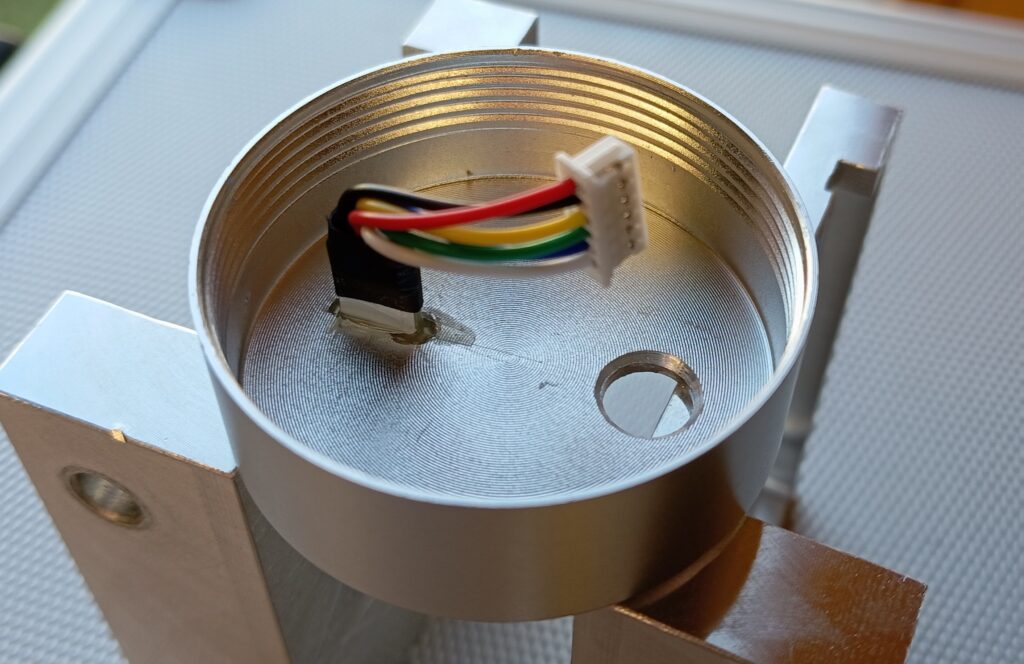If battery-operated sensors have to transmit data over a long period of time, LoRa is a suitable transmission method. LoRa uses a type of modulation that enables transmission over long distances with low energy. LoRaWAN, is a network protocol built on top of LoRa that manages communication between LoRa end devices and central servers. It defines aspects such as network infrastructure, security, device authentication, and data routing. While LoRa pertains to the physical layer (hardware), LoRaWAN provides the software and protocols needed for a functional IoT network. One of the largest LoRaWAN networks is TTN.

To ensure that the sensor can withstand the various environmental influences, it requires a solid enclosure. An aluminum cylinder with a screw cap is ideal here. The cylinder has an outer diameter of 39 mm and a height of 90 mm. With a wall thickness of 2 mm, this housing offers sufficient space for two AA batteries and the electronics. The cut-outs for the antenna and the actual sensor can be made in the lid.

The circuit essentially consists of the STM32L051 microcontroller and the RFM95W transceiver and is strongly inspired by a blog entry from iot-lab.org. The sensor utilized here is also the BME280, which measures air pressure as well as temperature and humidity. The sensor is on an extra circuit board which is guided through a recess in the cover and fixed with adhesive. This means that the sensor sits outside the housing while the contact is made inside.
Apart from the microcontroller and the transceiver, the main board mainly contains passive components. The board can be fitted with three different connections in addition to the antenna connector. One where the SPI bus is led out and one where an I²C bus is available. Via the third connection, the microcontroller can be programmed. Two LEDs can be used to output status information and, in addition to a reset button, a second button is available for use with future functions.
To seal everything properly, the antenna connection and the rubber seal of the cover should be sealed with silicone grease. For the part of the sensor board that is outside the housing, there are special sealants to make the boards weatherproof.


I designed the sensor to be able to take measurements in places where neither a power supply nor internet access is available in the immediate vicinity. All in all, I think that the sensor is well protected by the measures taken and will last a long time. I will build a second version in which the sensor is equipped with additional mechanical protection. As far as the battery life is concerned, I will report on how long a set of batteries lasts.
For environments where such a LoRaWAN node does not need extra protection, I will also construct a universal node that will have several interfaces and can be used for a variety of applications.
Leave a Reply